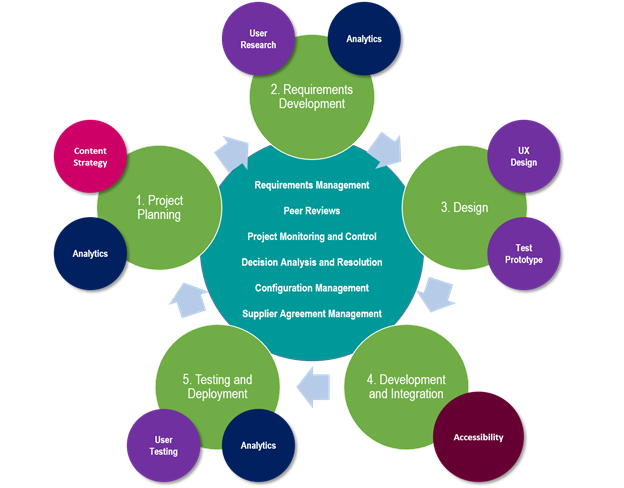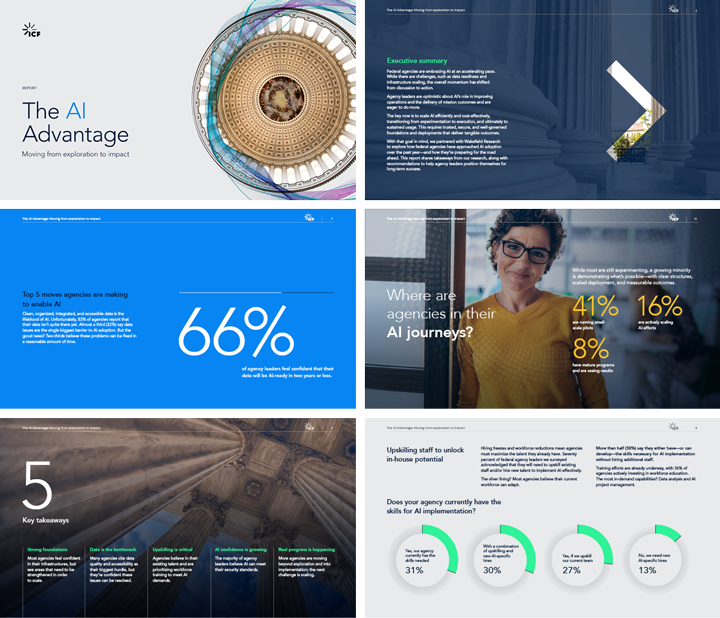Embed an experience strategist in IT projects to catalyze success
As a civil servant with the responsibility of managing one or more IT contracts, you already know how overwhelming the deluge of emails, meetings and deliverable reviews can be. Of course, that’s in addition to your day job. Ensuring the success of your portfolio of IT projects can be challenging -- especially in fast-moving Agile environments.
Of course, frequent and open communication with your contractor-side project manager is key to understanding the status of deliverables, identifying risks, meeting your needs, and overcoming challenges. The PM is your advocate.
But who is the voice of the user?
Experience Strategists Are User Advocates who Help IT teams Achieve Success
Here’s where experience strategy comes in. An embedded experience strategist—one who participates in requirements development, backlog grooming, sprint planning, standups, demos, and retrospectives—will greatly increase the chances that an IT project is successful by incorporating more insights-driven decision-making and user testing throughout the product lifecycle. They can help you set priorities, map strategies and goals to the agency mission, and communicate to your stakeholders about the value of the work being done.
Ask your IT PMs about bringing in an embedded experience strategist who can serve as a user advocate to ensure you:
- Map processes and user journeys to fix pain points and add moments of delight
- Gather and evaluate analytics and user research data to drive design decisions
- Design from a content-first perspective
- Structure content for dynamism, search and task completion
- Architect and organize content in usable, useful ways
- Rapidly prototype, test and refine features
- Keep product design on a platform- and device-agnostic course
- Establish standard processes for governing content and feature additions
- Comply with usability best practices and accessibility requirements
- Future-proof for emerging user needs such as voice search
Injecting Experience Strategy Requires Rethinking Team Composition and Operations
While skilled PMs are key to keeping projects on schedule, within scope, and at budget, they may not be the translators you need between users (e.g., your customers, whether internal or external) and technical staff (e.g., developers). The most successful IT projects inject strategy that puts user needs and content design—not technology—first.
If you’re feeling unsure about the strategic direction, user experience, or measurement plan for your IT projects, it’s likely that you’re lacking an overarching experience strategy driven by a mind that marries requirements to user expectations and that maps content needs and usability to technology decisions. If it’s been awhile since your contractor team talked about the project’s impact on the actual people who will use your digital tools, websites and apps—then it’s time rethink the team composition.


Now, if you’ve found yourself in this situation, it doesn’t necessarily mean your PM was a bad hire. They are doing the job you hired them to do. After all, most RFPs don’t specifically call for an experience strategist role embedded into the project. Federal IT managers should, however, consider including that role in future requirements and may want to look for ways to reshape existing teams to account for experience.
Your IT projects—even if they are delivered within scope, schedule, and budget—are only truly successful when your users are satisfied and when you can prove they are. Who’s with me? Tell me what you think on LinkedIn or Facebook.
